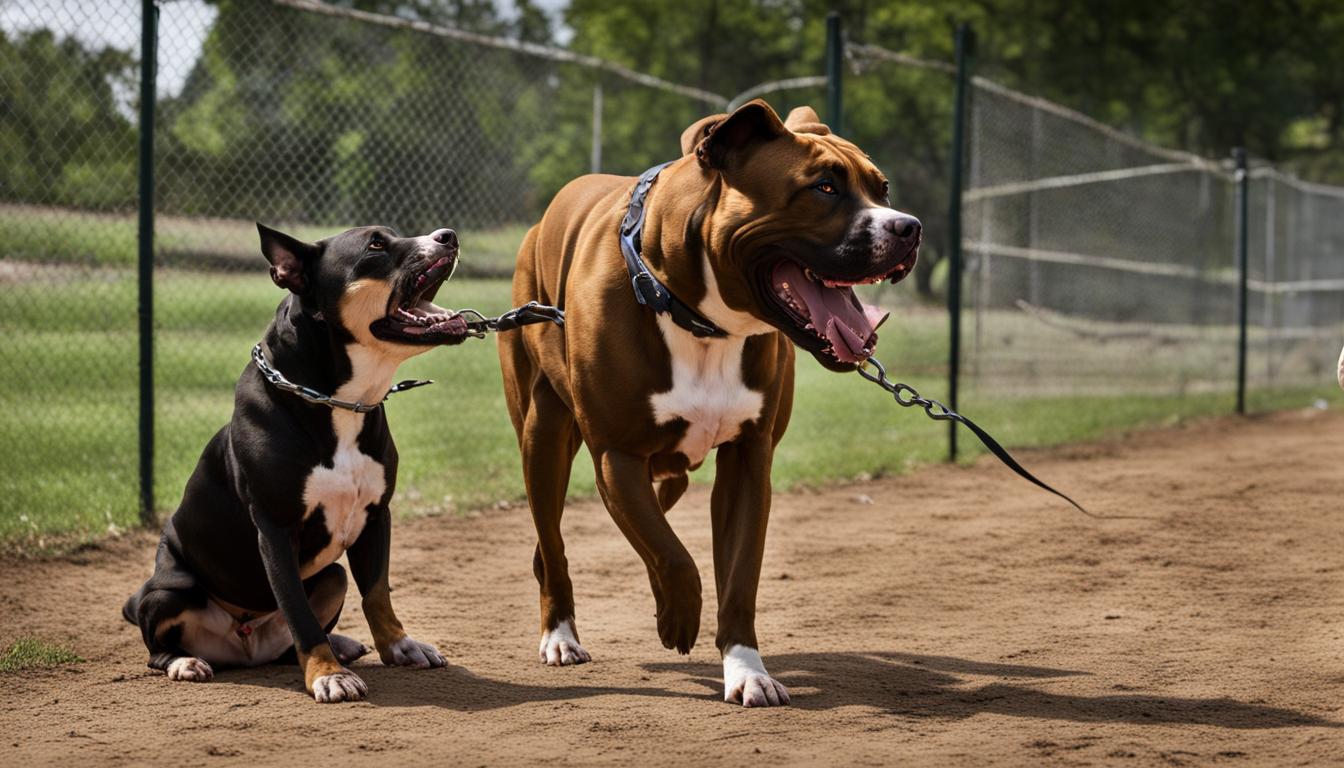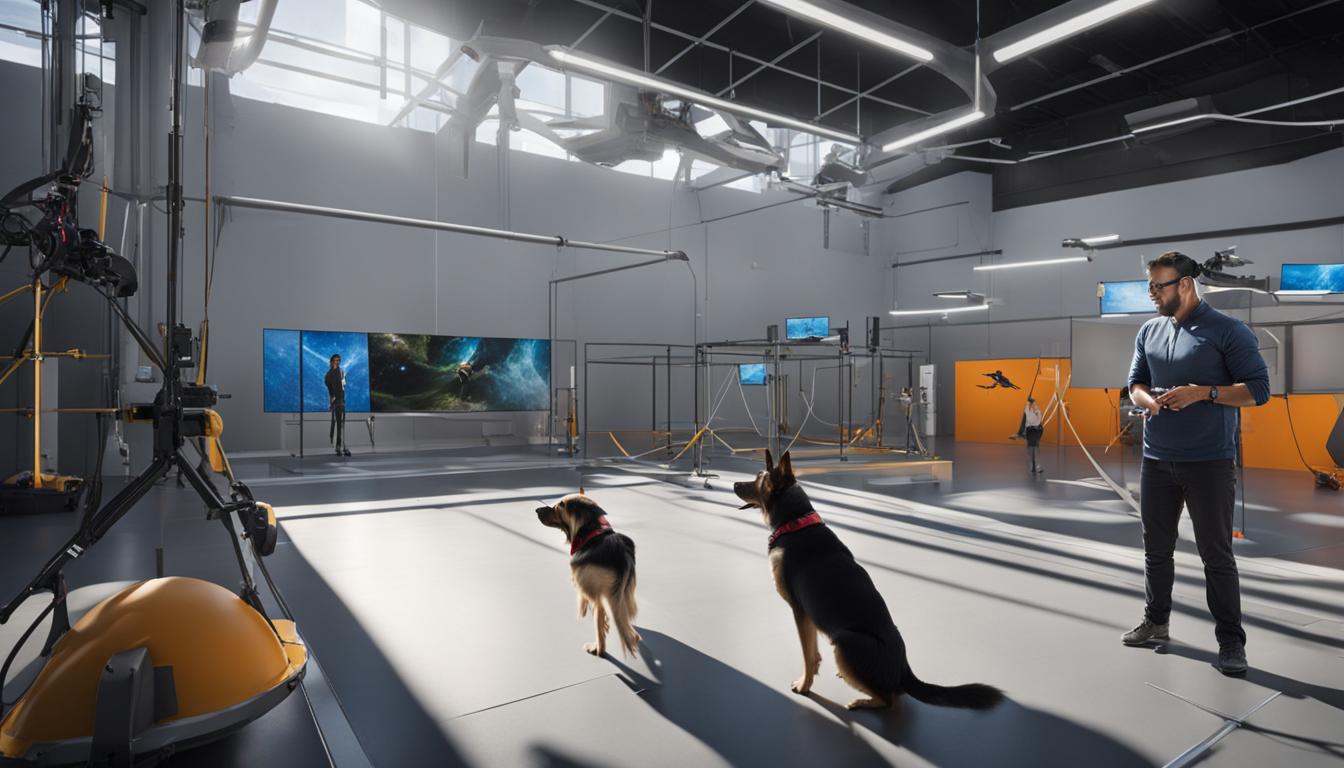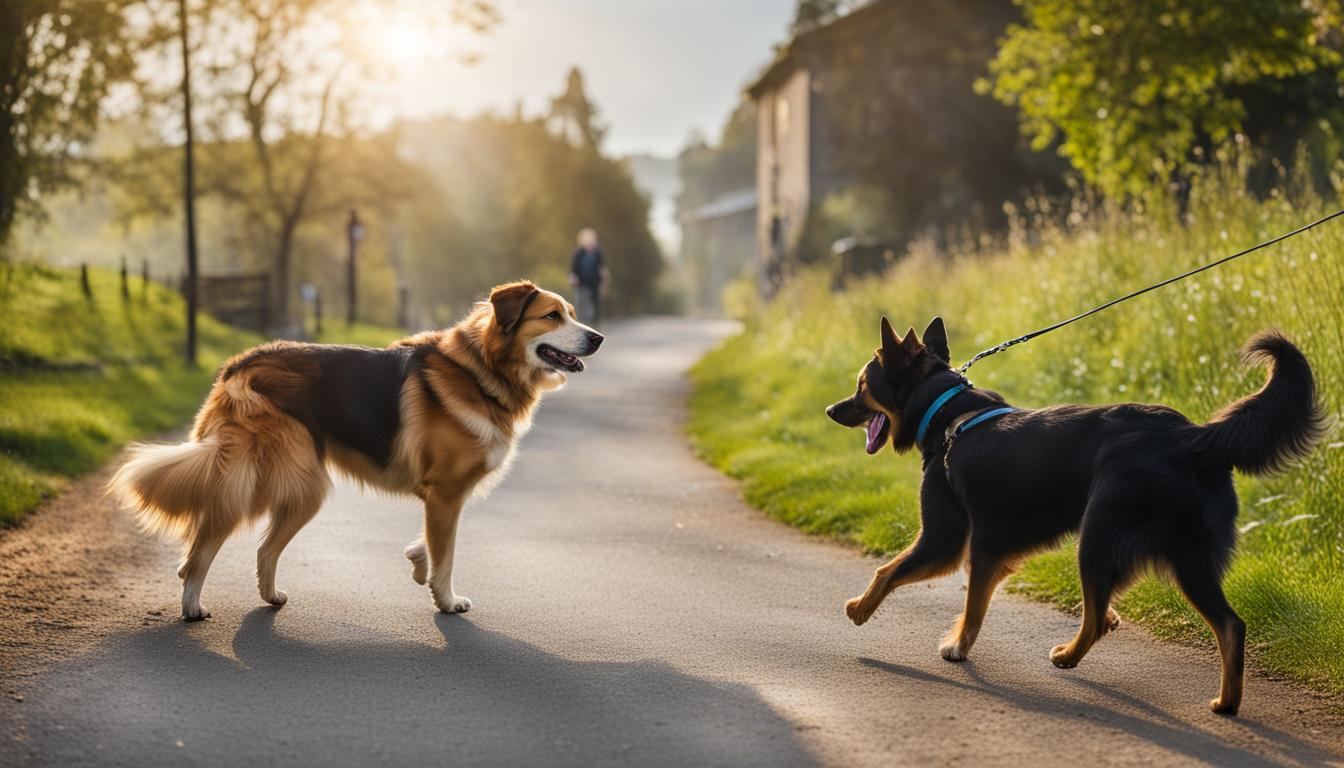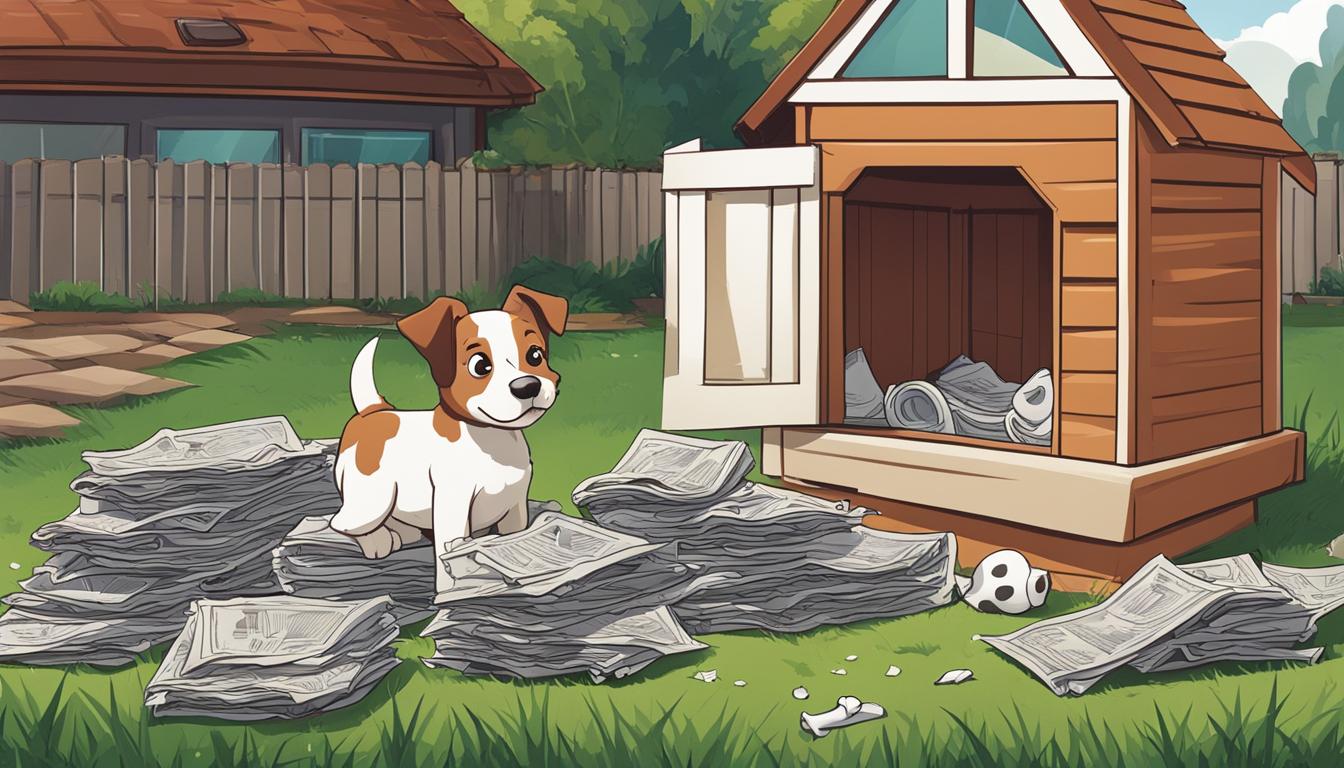Are you dealing with a dog that displays aggressive behavior? Understanding the types, causes, and effective training methods for dog aggression is crucial for ensuring the well-being of both your furry friend and those around them. In this comprehensive guide, we will explore everything you need to know about dog aggression, from recognizing the signs to implementing proven training techniques.
Aggression in dogs can manifest in various ways, including growling, snapping, and displaying dominance. It is essential to differentiate between playful behavior and genuine aggression to address the issue effectively. Through proper training and understanding the underlying causes, you can help your dog overcome their aggression and lead a happier, well-adjusted life.
Key Takeaways:
- Dog aggression can be addressed through early socialization and positive reinforcement training.
- Recognizing the signs of aggression, such as stiff body language and growling, is crucial for intervention.
- Common triggers for aggression include fear, territoriality, and lack of socialization.
- Seeking professional help from certified trainers or behaviorists is recommended for ongoing aggression issues.
- Persistence, patience, and the use of positive reinforcement are key to successfully training aggressive dogs.
Why Do Dogs Play Fight?
Dogs engage in play fighting as a natural part of their social interaction. It serves multiple purposes, including strengthening social bonds and establishing pack hierarchy. Play fighting allows dogs to practice their fighting skills in a safe and controlled environment, while also providing them with much-needed exercise. By engaging in this playful behavior, dogs learn important lessons about restraint, communication, and appropriate social behaviors.
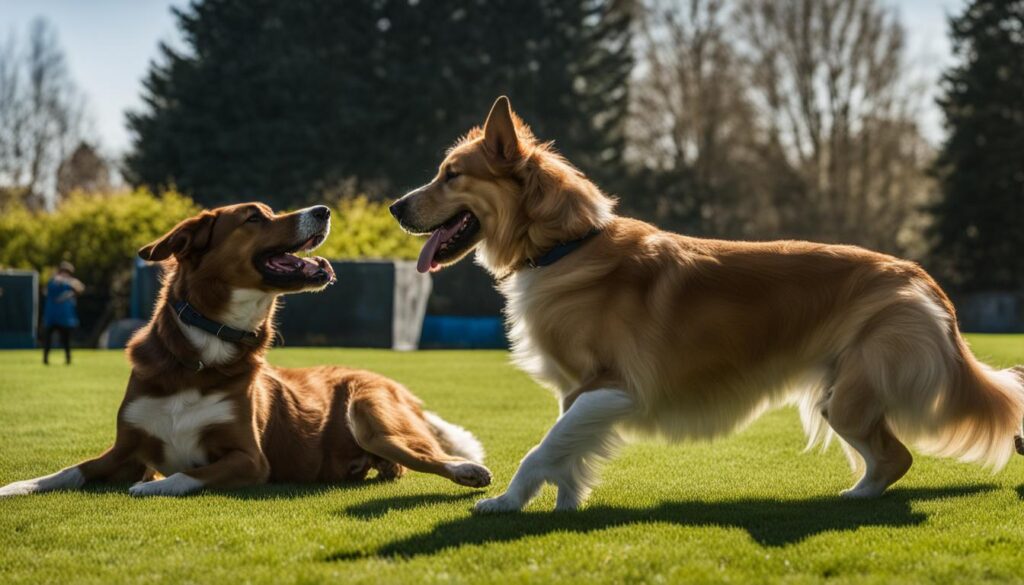
During play fighting, dogs take turns assuming different roles, such as the “chaser” and the “chasee.” This helps them develop an understanding of their place within the social structure and establish a hierarchy. Puppies, in particular, benefit greatly from engaging in play fighting, as it aids in their physical and cognitive development. Through play, they learn important social cues and boundaries.
“Play fighting allows dogs to express themselves, burn off excess energy, and practice important social skills in a fun and controlled setting,” says Dr. Samantha Collins, a renowned animal behaviorist.
It is important for pet parents to recognize the difference between play fighting and actual aggression. Play fighting is typically characterized by loose and relaxed body language, wagging tails, and gentle bites. However, if the play becomes too intense or one dog appears distressed, it’s important to intervene and redirect their focus to more appropriate play behaviors. Understanding the nuances of play fighting can help pet parents ensure a safe and enjoyable playtime for their furry friends.
Signs Your Dog Is Playing
Dogs are known for their playful nature, and it’s important for pet parents to recognize the signs that indicate their dog is engaging in friendly play. Understanding these behaviors can help differentiate between playfulness and aggression, ensuring a safe and enjoyable environment for both dogs and their human companions.
One clear sign that your dog is playing is the “play bow.” This is when your dog lowers their front end while keeping their rear end upright, often accompanied by a wagging tail. The play bow is an invitation to engage in play and is a common behavior seen among dogs during playtime. It’s a way for dogs to signal that they are in a playful mood and want to interact with other dogs or humans.
Another sign of playing is open-mouthed play. Dogs will often engage in gentle biting or mouthing during play, but it is important to note that the bites are typically inhibited and not meant to cause harm. Playful growling or barking can also be observed, but it is typically higher-pitched and accompanied by a relaxed body language.
Taking turns in chasing each other and displaying high energy are additional indications that your dog is engaged in play. Playful dogs will often switch roles, with one dog chasing the other and then reversing the roles. This back-and-forth interaction is a common behavior seen in play sessions. Additionally, playful dogs tend to have a relaxed body posture, loose and wagging tails, and may exhibit “zoomies” or wild bursts of energy.
Table: Behaviors Indicative of Playful Dog Behavior
| Behavior | Explanation |
|---|---|
| Play bow | Lowering front end while keeping rear end upright, often accompanied by a wagging tail |
| Open-mouthed play | Gentle biting or mouthing without causing harm |
| Playful growling or barking | Higher-pitched vocalizations accompanied by a relaxed body language |
| Taking turns in chasing | Switching roles between being the chaser and the one being chased |
| Displaying high energy | Exhibiting bursts of excitement and running around with a relaxed body posture |
Recognizing these signs of playful behavior is essential for pet parents. It allows them to encourage and facilitate positive play experiences for their dogs. Additionally, understanding the behaviors associated with playfulness helps distinguish them from signs of aggression, ensuring that appropriate interventions are taken when necessary. Playtime is an important aspect of a dog’s life, promoting physical exercise, mental stimulation, and the development of social bonds.
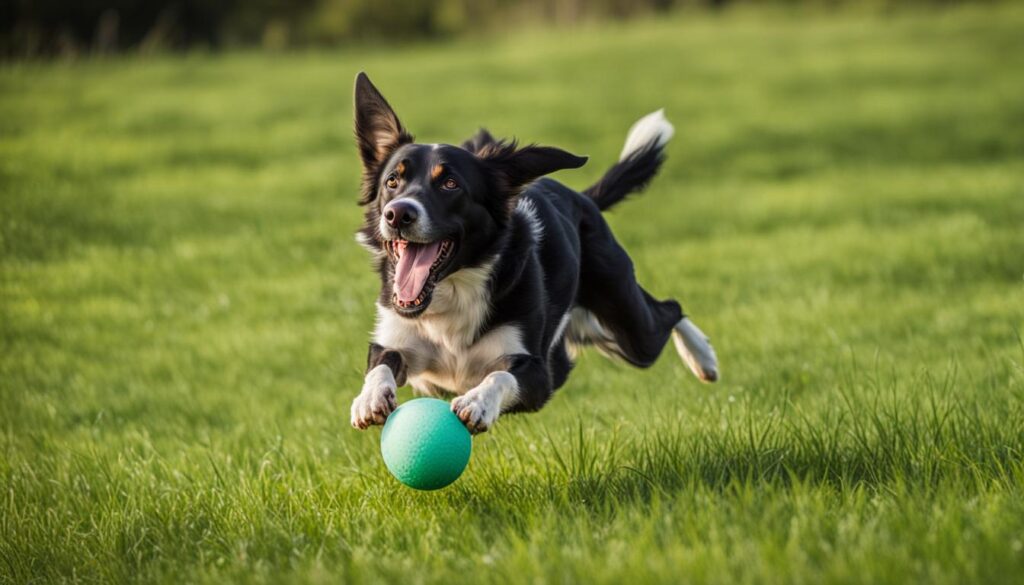
Signs of Aggression in Dogs
Dogs, like humans, demonstrate their emotions through body language and vocalizations. It’s important for pet parents to be able to recognize the signs of aggression in dogs to ensure the safety of both the dog and those around them. Here are some common signs of aggressive behavior to watch out for:
Stiff Body Language:
A dog displaying aggression will often have a stiff and tense body posture. This includes rigid muscles, upright tail, and raised hackles. The dog may also maintain direct eye contact and have dilated pupils, indicating a heightened state of alertness.
Growling and Snapping:
Growling is one of the most obvious signs of aggression in dogs. It is a vocal warning that the dog is feeling threatened or uncomfortable. Snapping can occur when the dog is at a high level of arousal and may lead to biting if the situation escalates or if the dog feels cornered.
It’s important to note that aggression in dogs can manifest differently depending on the individual. Some dogs may display more subtle signs such as lip licking, yawning, or freezing in place. It’s crucial to pay attention to the context and overall body language of the dog to accurately assess their behavior.
Recognizing these signs is crucial for pet parents to intervene and prevent potential incidents. If you notice any signs of aggression in your dog, it’s important to seek professional help from a certified trainer or behaviorist who can provide guidance and develop a tailored training plan.
| Signs of Aggression | Description |
|---|---|
| Stiff Body Language | Dog displays rigid muscles, upright tail, raised hackles, and maintains direct eye contact |
| Growling | Dog emits vocal warning sounds to communicate discomfort or threat |
| Snapping | Dog attempts to bite when feeling cornered or highly aroused |
What Causes Aggression in Dogs?
Dogs can display aggression for various reasons, and understanding the underlying causes is crucial for managing their behavior effectively. Some common causes of aggression in dogs include fear, territory guarding, and lack of socialization.
Fear: Dogs may become aggressive when they feel threatened or scared. This can be triggered by unfamiliar people, loud noises, or traumatic experiences. It’s important to provide a safe and secure environment for fearful dogs and to gradually expose them to new experiences through positive reinforcement training.
Territory Guarding: Dogs are naturally territorial animals, and some may exhibit aggression when they feel their territory is being invaded. This can include their home, yard, or even their favorite toys. Proper training and socialization can help dogs understand that they don’t need to protect everything and can reduce territorial aggression.
Lack of Socialization: Dogs that haven’t been properly socialized with other dogs, animals, or people during their crucial developmental stages may become fearful or defensive, leading to aggression. Early socialization is key to teaching dogs appropriate behavior and helping them feel comfortable in different situations.
Addressing the causes of aggression in dogs requires patience, consistency, and a proactive approach. Seeking guidance from a professional dog trainer or behaviorist can also be beneficial in developing a tailored training plan for your dog’s specific needs.
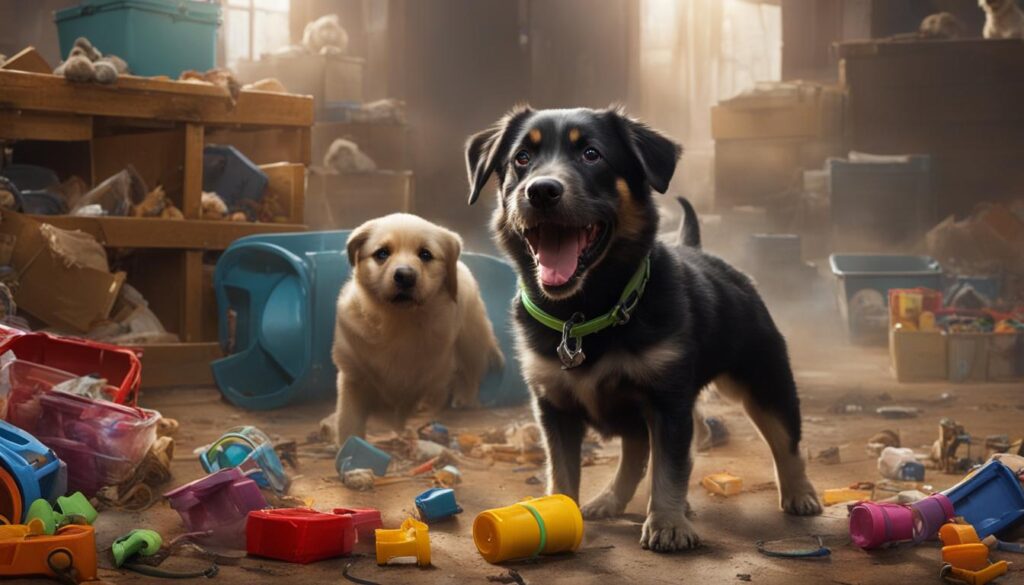
Conclusion
Training techniques for aggressive dogs, socialization tips for aggressive dogs, and calming techniques for aggressive dogs are essential for addressing and managing your dog’s aggressive behavior effectively. By implementing a comprehensive approach, you can help your dog learn appropriate behaviors and reduce their aggressive tendencies.
Early socialization is key to preventing aggression issues in dogs. Introduce your dog to various people, animals, and environments from a young age to help them develop positive associations and reduce fear-based aggression. Positive reinforcement training, using rewards and praise, is highly effective in teaching dogs desired behaviors and building a strong bond between you and your dog.
In addition to training, it’s important to provide regular exercise and mental stimulation for your dog. A tired dog is a well-behaved dog, as exercise helps release pent-up energy and reduces frustration. Engage in interactive play, provide puzzle toys, and consider activities like agility or obedience training to keep your dog mentally stimulated and satisfied.
If your dog’s aggression issues persist or worsen, seeking help from professionals, such as certified trainers or behaviorists, is recommended. They can provide tailored guidance and support based on your dog’s specific needs. Remember, dealing with aggression takes time, patience, and consistency. With the right approach, most dogs can learn to behave appropriately and overcome their aggressive tendencies.
FAQ
What are the signs of aggression in dogs?
Signs of aggression in dogs include stiff posture, growling, constant chasing, and ignoring cues to stop.
What triggers aggression in dogs?
Common triggers for aggression in dogs include fear, pain, guarding resources, lack of socialization, and dominance disputes.
How can aggression issues in dogs be prevented?
Early socialization and positive reinforcement training can help prevent aggression issues in dogs. Seeking help from certified trainers or behaviorists is recommended for ongoing aggression problems.
Why do dogs play fight?
Play fighting in dogs helps them practice fighting skills, develop social bonds, learn restraint, and get exercise. It also helps establish pack hierarchy and understand their place within the social structure.
What are the signs that indicate my dog is playing in a friendly manner?
Signs that indicate your dog is playing in a friendly manner include the play bow, gentle biting, open-mouthed play, playful growling or barking, taking turns in chasing, and displaying high energy.
How can I differentiate between playfulness and aggression in my dog?
It is important to recognize signs of aggression, such as stiff and tense body language, bared teeth, harsh growling, refusal to let other dogs retreat, harsh lunging or snapping, and ignoring cues to stop. Playful behavior, on the other hand, includes the play bow, gentle biting, open-mouthed play, playful growling or barking, taking turns in chasing, and displaying high energy.
What are the common causes of aggression in dogs?
Aggression in dogs can be triggered by various factors, including fear, territoriality, protecting resources, establishing dominance, pain or discomfort, lack of socialization, redirected aggression, possessiveness over the owner, predatory drive, and certain medical conditions.
How can I address and manage my dog’s aggressive behavior?
Dealing with dog aggression requires a comprehensive approach, including early socialization, positive reinforcement training, and seeking help from professionals if needed. Consistent rules and boundaries, regular exercise and mental stimulation, avoidance of punishment techniques, desensitization, and counterconditioning are all effective methods for modifying aggressive behavior.

